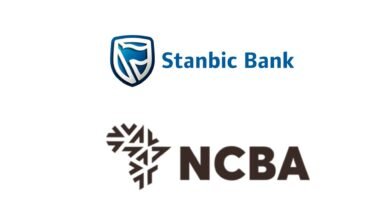
PesaLink, the Kenyan real-time interbank switch under the Kenya Bankers Association, is set to introduce a merchant payment option, directly competing with Safaricom’s Lipa na M-Pesa service. This move follows recent concerns expressed by Safaricom customers due to the growing number of outages affecting the M-Pesa system.
Originally launched in 2017, PesaLink primarily focused on facilitating seamless financial transactions between bank accounts, eliminating the need for intermediaries. However, responding to long-standing customer demands, PesaLink has said it plans on adding a merchant payment feature to its offerings. While a specific rollout timeline remains undisclosed, this new feature is expected to enhance the platform’s versatility and utility.
Hey @SaruniBM . We’re loving this debate. Most PesaLink Payments are business-related: bulk transactions, invoices, rent and more. Watch this space for Merchant payments… some news coming soon! @Henry_Kingg @mbuguanjihia @kiruti @JbHolmes19
— PesaLink (@IPSL_Kenya) January 23, 2024
Operating as a mobile-first platform, PesaLink can be accessed through bank mobile apps, internet banking, or USSD codes. Users can send amounts ranging from KES 10 to KES 999,999, taking full advantage of the instant bank-to-bank payment capabilities. The platform operates 24/7, ensuring customers have round-the-clock access for their transactions.
PesaLink’s network has expanded significantly since its inception, now encompassing 31 banks in Kenya. It has also gained popularity among various payment service providers, SACCOs (Savings and Credit Cooperative Organizations), and telecommunications companies. However, despite its cost-effectiveness, PesaLink has faced challenges in gaining widespread acceptance, primarily due to the significantly larger number of mobile money account holders compared to commercial bank account holders in Kenya.
Statistics from the Communication Authority of Kenya (CA) reveal that the country boasts 38,432,728 active mobile money subscriptions, indicating a penetration level of 75.1 percent. In contrast, data from the Kenya National Bureau of Statistics shows that 69 percent of Kenyan adults do not possess a commercial bank account. These statistics underscore the challenge faced by PesaLink in gaining widespread adoption as it seeks to rival Safaricom’s Lipa na M-Pesa.
Of importance to note is that we are at a point where till numbers from Lipa na M-Pesa are interoperable with other mobile money solutions. So it won’t necessarily mean that a PesaLink solution will need to rollout merchant codes to get going.
PesaLink’s announcement that it could introduce merchant payments is timely, given the increasing demand for alternatives to Safaricom’s M-Pesa service, which has faced recent outages. There’ve been arguments for PesaLink to evolve into a separate entity, detached from its current partnership with Kenyan banks. These suggestions re-imagine PesaLink as a dedicated PesaLink app and ecosystem that is interoperable with different payment systems and services allowing for both transfers, payments and even withdrawals. But that would be quite the undertaking, and it isn’t clear who will back such a system financially and legislatively. For now, we wait to see what a PesaLink customer to business payment system will look like.






